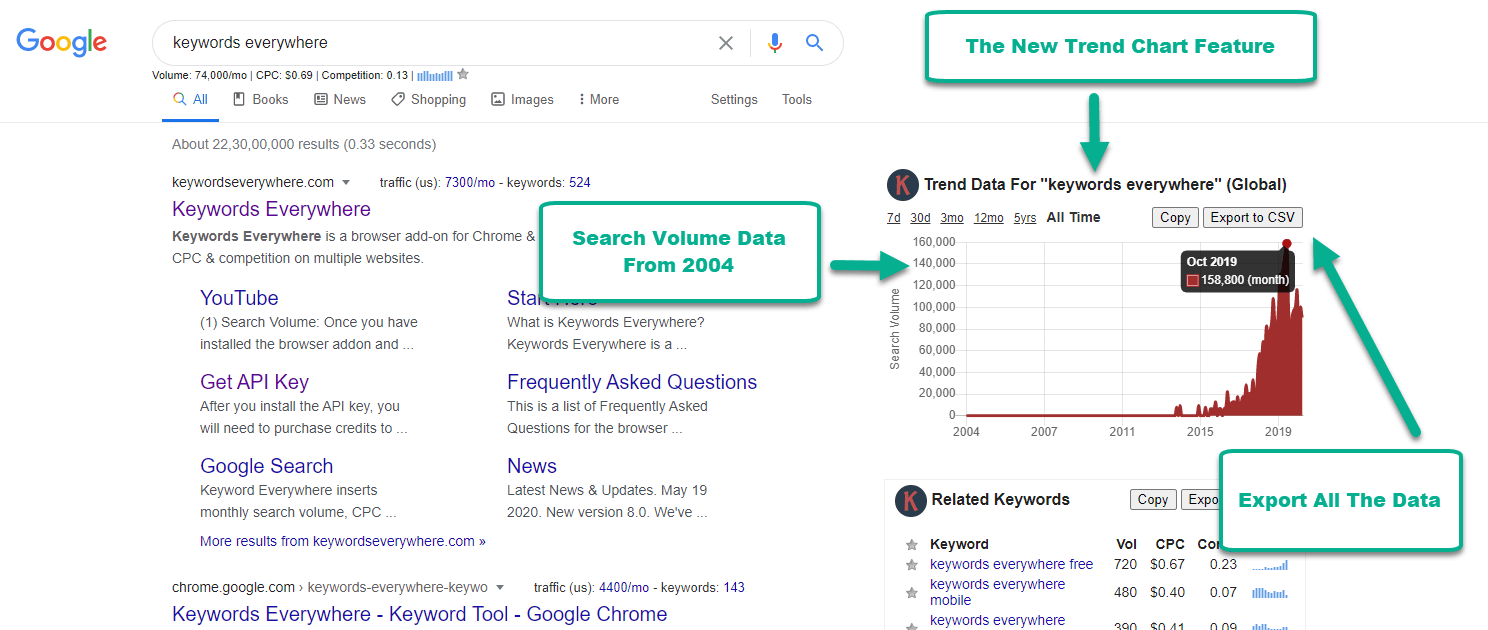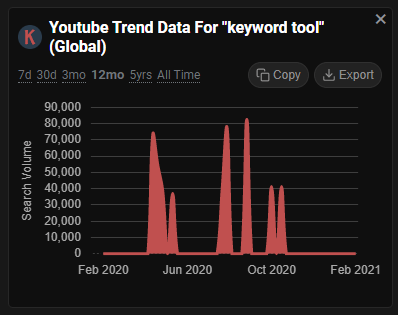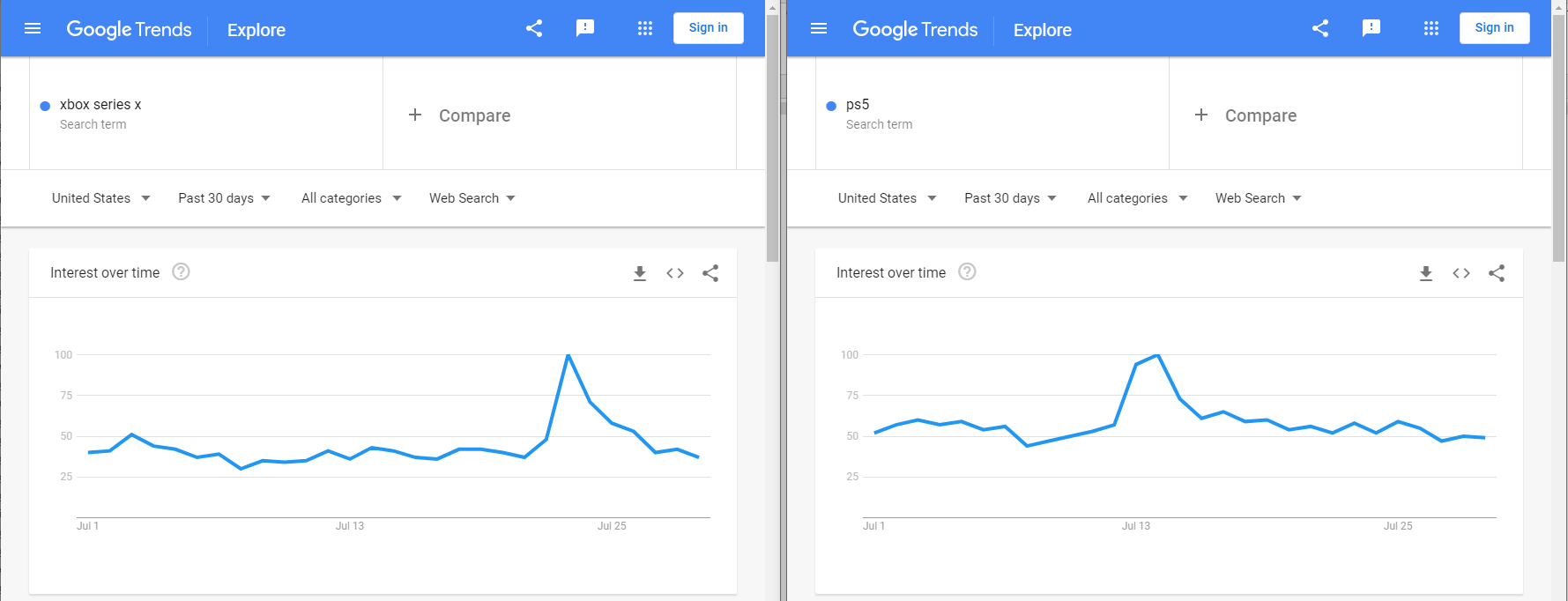Trend Chart & Historical Volume Data
Have you ever done keyword research on Google Trends and wished they showed you the volume for the keywords, instead of just a trend?
Well, that's the feature we've added at Keywords Everywhere. You can now see the estimated historical search volume for any keyword from 2004 onwards.
Execute a Google search, and you should see the trend chart show up on the right-hand side.

You can mouse-over all the data points and see the individual monthly, weekly, daily, or hourly search volume for that term. You can also copy the data to Google sheets or download all the data to a CSV file.
This feature also works on YouTube and shows the volume & trend of searches performed on YouTube.

Like all of our features, you can toggle this one on or off using a checkbox called "Show Trend Chart in Google/YouTube" at the bottom of the settings page.
How is it calculated?
Google Trends uses actual Google search data that is anonymized. There is a minimum search volume above which Google provides the trend data for a keyword. You can read more about how Google Trends data directly from a Google FAQ.
We know that Google has the actual search volumes for all the data that Google Trends shows. However, they normalize this data for every search term and show only values from 0 to 100. While this is awesome for seeing how a keyword is trending, it's an awful way to compare two keywords.
Take a look at the two keywords shown below in Google Trends. One is the trend of the last 30 days for "xbox series x" and the other is for "ps5". Which one do you think is winning the search race?

Which one do you think is better? Without knowing the actual search volume, it's impossible to choose between them. Hint - one is 10,000 times more valuable than the other when it comes to the amount of traffic you can expect.
At Keywords Everywhere, we reverse engineer this Trend data.
Google Trends provides a bunch of APIs that Keywords Everywhere uses to get trend data values. The trend data values are directly from Google and so match what you see on the Google Trends website.
Since we already have exact search volumes for the last 12 months, we use the volume data to de-normalize the trend data, thereby providing exact search volumes for the trend data.
We take the monthly search volume data for the previous 12 months from Google Keyword Planner. We match this data with the Google Trends data for the previous 12 months. Once we have a good fit, it's just a matter of scaling the numbers based on matching volumes and presto - the 0 to 100 values are converted to useful search volume numbers.
See the screenshot below to compare the same two terms. Can you now see why one has had more searches in the last 30 days?

It's pretty easy if you have the right data.
Can you show trend data for all search queries?
Google Trends only shows the trend data for searches that have some significant search volume. They don't publish what this minimum number is, and we've not been able to figure out why some medium volume keywords are not shown in Google Trends, while some low volume keywords are shown.
Unfortunately, only Google has this trend data, so if they do not show the trend data for a particular keyword, then we are unable to show it as well.
If a keyword is brand new, then it will take a month or so before Google Keyword Planner shows the volume data. Due to this, we can show the trend chart for such keywords, however, we are unable to show the volume.
Can we get this data in bulk?
Yes. When you click the "K" icon you should see a menu item called "Bulk Trends Data". When you click it, you will see a page where you can enter up to 1000 keywords at a time. This page will generate the historical search volumes for all these keywords. This feature uses Google Trends' APIs, so is a lot slower than the "Bulk Keywords Data" functionality.
How are credits used?
To calculate historical search volume we need access to the monthly search volume. In any Google & YouTube search, since this volume is already available, no credits are used up by the Trend chart feature. However, in the Bulk Trends functionality, one credit is used for every keyword that you get the data for.